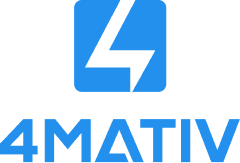Pieces of the Policy Puzzle
Framing the Core Challenges
Over the past twenty years, school systems have been moving from a “one-size-fits-all” approach to a more learner-centric model; however, innovation in school transportation has not kept pace. Current K-12 transportation options are limited to a fixed set of high-cost transportation vendors and modes that are inflexible and burdensome to schools and families. Incentives are misaligned between school systems and transportation providers.
As a result, even where policy supports unbundling, school choice, and personalization, transportation is a major barrier for students and families to access high-quality learning opportunities. Never before has the need been greater to reimagine student transportation as an equitable and adaptable ecosystem of options that meet the needs of every student and family.
Key to reimagining student mobility requires addressing the regulations, policies, administrative hurdles, and incentives that impede innovation.

Regulations Add Complexity and Limit Innovation
The regulations and rules surrounding a given community’s transportation options make it difficult to develop better solutions – like simply replacing a bus with a more efficient van. At the federal level, public transportation agencies are restricted from using Federal Transit Administration funding (or any equipment bought with federal funding) to provide service exclusively for students and school staff or to provide public “tripper” service that significantly differs from regular service (1, 2).
Many states also restrict which types of vehicles can be used for transportation, even when routes are low density, long distance, and for specialty purposes. For example, Georgia allows only school buses for student transportation. This policy means that districts must contract a school bus even when only one student needs to be transported on a route, such as when a student experiencing homelessness is being sheltered far away and needs transportation to their school of origin (3).
Even in places that do allow non-school buses (like Rhode Island), qualified vendors are often dissuaded from entering markets because additional vehicle regulations for use of vans and smaller vehicles require them to be modified with stop arms or school bus signs or to have specific additional equipment in vehicles like airway kits, flares, bodily fluid clean-up kids, and seat belt cutters.. States also fail to give clear guidance on licensing and vetting expectations for van and sedan drivers for school transportation. Requirements often have to be pieced together from education department administrative codes, Department of Motor Vehicle regulations, and the Department of Public Safety. Regulations may contain references to licenses that no longer exist, such as Indiana’s chauffeur license (4).

Policies Exacerbate Inequities and Service Gaps
While broad school access and school choice may be mandated in specific states, too often those mandates are underfunded or unfunded, requiring families to shoulder a larger share of the cost. The practice has grown with state funding shortfalls. Twelve states allow districts to pass costs onto families, nineteen prohibit it, and Hawaii requires it (5, 3). In Idaho, transportation for charter school students is mandated, but they reimburse only 60% of expenses. Idaho does allow vans or other small vehicles for service, which creates flexibility and lowers cost, but those modes are not reimbursable under regular state funding formulae (6, 4).
In some cases, districts and charter schools can offer payment-in-lieu of transportation services, but this could be another potential source of funding inequity if payments are not differentiated based on actual need, or if low-income families still have no vehicle or other option to get their own students to school. And those who can drive their children already increasingly do. Encouraging more to do so with direct payments (and without incentives for carpooling) could compound traffic congestion problems at schools (5).
The problem of unfunded mandates is particularly notable in the case of students experiencing homelessness. While the McKinney-Vento Act grants them the right to be transported to their school of origin (even if they would not normally be eligible to do so), many states do not provide additional dedicated transportation funding for homeless students by default. Instead, districts must apply for additional grant funding, which is typically inadequate (7).
Finally, a greater percentage of rural school budgets go to transportation,because those districts require greater travel distances and can require vehicles to traverse rougher terrain that wears down vehicles. In contrast, urban districts can allocate more of their budget to direct instruction, further increasing geographic inequities (8).

Administrative Hurdles Prevent Change
In places where alternatives to the yellow school bus are available and used, administrative hurdles often prevent them from being fully utilized. For example, in some states, van and sedan drivers are required to go through the same arduous training and qualification hoops as CDL-required larger vehicles, even though much of that training is not applicable to their smaller passenger vehicles.
Bottom-up solutions like walking, biking, parent payment, and parent carpools can fall into a gray area because no clear guidelines exist describing school liability. This lack of clarity and risk aversion hinders implementation. Safe Routes to School funding is also commonly misunderstood and rarely employed by districts to create more walk-friendly and bike-friendly active transit infrastructure around their schools. In Texas, a longstanding funding vehicle can provide transportation to students who are within the two-mile walk zone but encounter safety hazards en route to school, but it has rarely been used (9).

Incentives Remain Woefully Misaligned
Fundamentally, school district spending behavior is influenced by state funding formulas. Those formulas should reflect state priorities. If efficient use of resources is a priority, then funding should be allocated with a predictive or efficiency-driven formula, rather than an Approved Cost Method. Very few states employ such a funding model. Instead, some states let districts choose the most advantageous of a set of funding formulas (eg., OH, NY). In the state of New York, this misalignment produced a reimbursement scheme that favors wealthier districts, is unresponsive to changes in enrollment or local wealth, and has contributed to the highest per-pupil transportation costs in the country: $1341/student in SY18-19, compared to a national average of $552/student (10, 11).
Funding for students experiencing homelessness as required by the McKinney-Vento act not only varies state-by-state, but also creates misaligned incentives. For example, Minnesota reimburses those populations at 90%, while Texas does not offer any additional funding for McKinney Vento transportation. As a result, Minnesota schools tend to over-classify and over-report and have a proliferation of costly small vehicle vendors, while Texas schools are incentivized to under-report and under-classify students as homeless (6).
Finally, transportation vendors offering one or a set of modes have business models that incentivize increased school spending and inefficiency: their profits come from adding vehicles or by charging a percentage of total transportation expenditures. Variable cost vendors that charge per vehicle or per ride have similarly misaligned interests: their profits grow when schools do not track ballooning costs of on-demand services, adding miles and routing fewer students per vehicle) (12).
